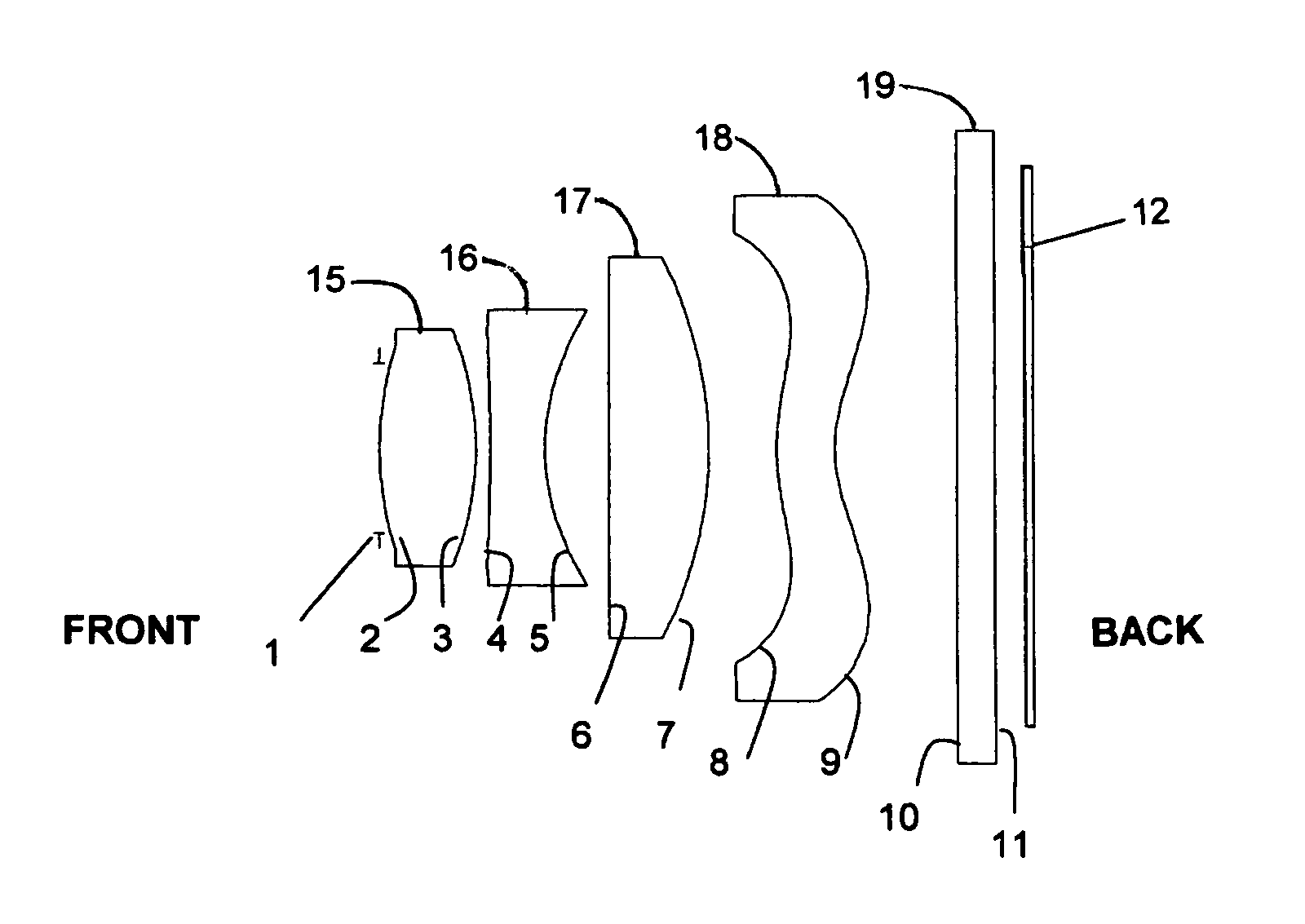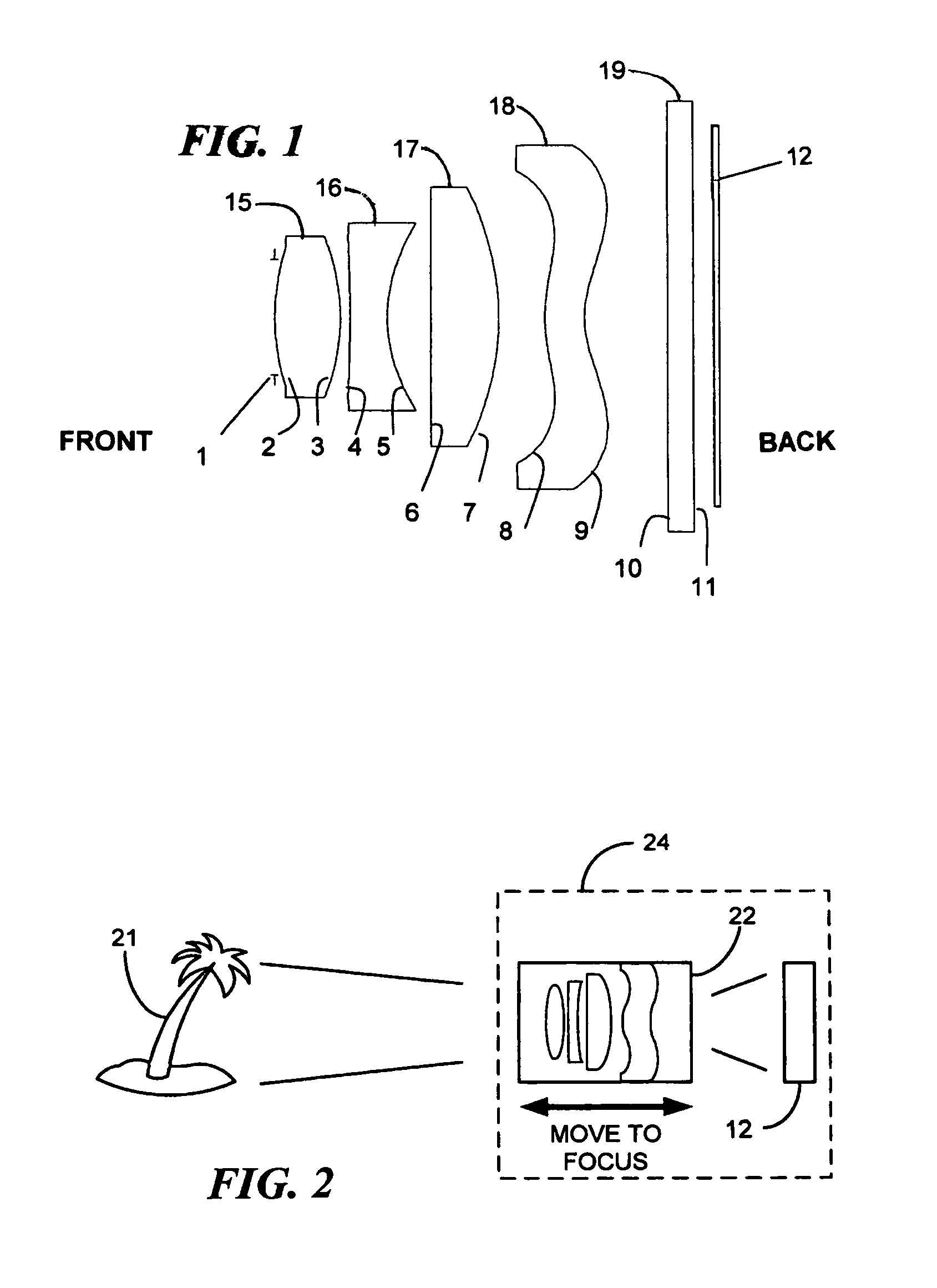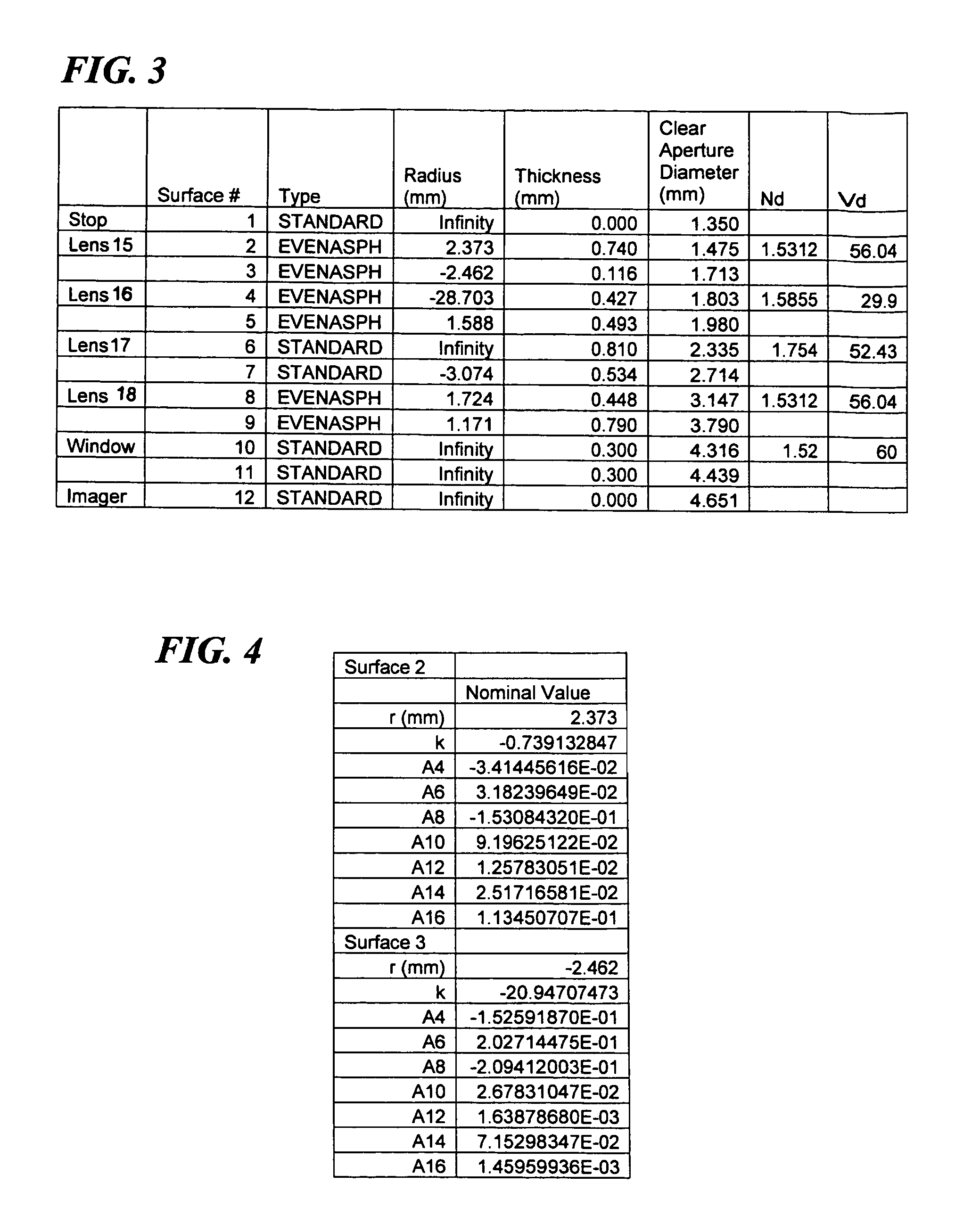Miniature camera lens system
a miniature camera and lens system technology, applied in the field of optics, can solve the problems of reducing the size of the optics, reducing the size of the clear aperture while minimizing any adverse impact upon distortion and/or resolution, and affecting the overall effectiveness and desirability of the camera, so as to achieve the effect of reducing the size, reducing distortion, and maintaining desirable resolution
- Summary
- Abstract
- Description
- Claims
- Application Information
AI Technical Summary
Benefits of technology
Problems solved by technology
Method used
Image
Examples
Embodiment Construction
[0039]A method and system for reducing the size of a miniature camera are disclosed. The method and system are suitable for use in miniature cameras commonly used in personal electronic devices, such as cellular telephones, personal digital assistants (PDAs), laptop computers, notebook computers, and pocket personal computers (pocket PCs).
[0040]The present invention facilitates the construction of a lens system having a smaller clear aperture than contemporary lens systems. As those skilled in the art will appreciate, clear aperture is also known as free aperture or objective aperture and can be defined as the opening in the mount of an optical system or its components that restricts the extent of the bundle of rays incident on a given surface. It is necessary to reduce the free aperture of a lens system in order to decrease the diameter of the lens system.
[0041]Further, the lens system is configured such that smallest lens is the first lens. The first lens can be defined herein as ...
PUM
 Login to View More
Login to View More Abstract
Description
Claims
Application Information
 Login to View More
Login to View More - R&D
- Intellectual Property
- Life Sciences
- Materials
- Tech Scout
- Unparalleled Data Quality
- Higher Quality Content
- 60% Fewer Hallucinations
Browse by: Latest US Patents, China's latest patents, Technical Efficacy Thesaurus, Application Domain, Technology Topic, Popular Technical Reports.
© 2025 PatSnap. All rights reserved.Legal|Privacy policy|Modern Slavery Act Transparency Statement|Sitemap|About US| Contact US: help@patsnap.com



